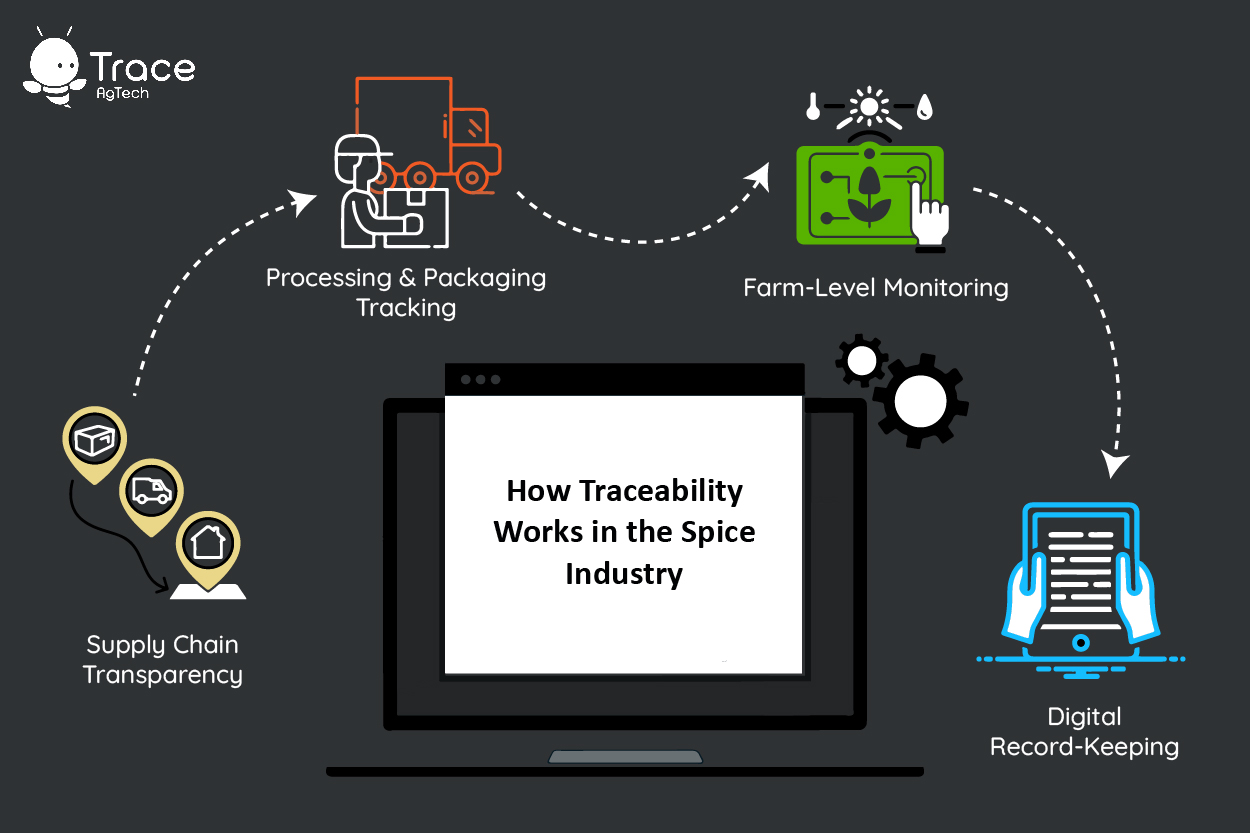Traceability in the Spice Industry: Ensuring Quality and Safety
In today’s global market, the spice industry faces a unique set of challenges and opportunities. Spices, which traverse long supply chains from exotic farms to dining tables worldwide, require stringent measures to ensure their quality and safety. One of the most effective ways to achieve this is through robust traceability systems. These systems provide transparency, mitigate risks, and ensure that the spices reaching consumers meet the highest standards. Here’s how traceability is transforming the spice industry.
The Importance of Traceability in the Spice Industry
Traceability involves tracking the production, processing, and distribution stages of a product. In the spice industry, this means monitoring every step from the farm where the spice is grown to the final packaging. This detailed tracking is essential for several reasons:
-
Food Safety and Contamination Prevention
- Spices, like other food products, can be susceptible to contamination from pathogens, pesticides, and heavy metals. Traceability systems enable rapid identification and isolation of contaminated batches, minimizing the risk of foodborne illnesses and protecting public health.
-
Quality Assurance
- Consumers expect spices to be fresh, flavorful, and free from adulterants. Traceability ensures that only high-quality spices reach the market by providing detailed records of cultivation practices, harvest conditions, and processing methods.
-
Regulatory Compliance
- The spice industry is subject to rigorous regulations to ensure safety and quality. Traceability systems help producers comply with these regulations by maintaining comprehensive records, thus avoiding legal issues and facilitating market access.
-
Building Consumer Trust
- Today’s consumers are increasingly concerned about the origins of their food. Traceability provides transparency, allowing consumers to know where and how their spices were produced. This transparency fosters trust and loyalty, enhancing brand reputation.
How Traceability Works in the Spice Industry
Traceability in the spice industry involves several key components:
-
Farm-Level Monitoring
- The process begins at the farm, where information about the spice crop, such as the variety, cultivation practices, and harvest date, is recorded. This data is crucial for ensuring the quality and authenticity of the spices.
-
Processing and Packaging Tracking
- Once harvested, spices undergo various processing stages, including drying, grinding, and packaging. Traceability systems track these stages, documenting conditions such as temperature, humidity, and hygiene practices to ensure product safety and quality.
-
Supply Chain Transparency
- Spices often pass through multiple intermediaries before reaching the consumer. Traceability systems provide visibility into each link of the supply chain, from transporters and distributors to retailers. This transparency helps in identifying any potential issues and ensures that the spices maintain their integrity throughout the journey.
-
Digital Record-Keeping
- Modern traceability systems leverage digital technologies like blockchain, IoT, and cloud computing to maintain accurate and tamper-proof records. These technologies enhance the efficiency and reliability of traceability efforts, making it easier to trace a product’s journey in real-time.

Benefits of Traceability for Stakeholders
The benefits of traceability extend to all stakeholders in the spice industry:
-
Farmers
- Farmers gain insights into best practices and can improve their crop management techniques. Traceability also opens up access to premium markets that demand high-quality, traceable products.
-
Processors and Distributors
- Processors and distributors benefit from streamlined operations, reduced risks, and improved compliance with safety standards. Traceability helps them maintain the quality and authenticity of their products, enhancing their market reputation.
-
Consumers
- Consumers receive safer, higher-quality products with verified origins. Traceability empowers them to make informed choices, fostering trust and satisfaction.
-
Regulators
- Regulatory bodies can more effectively monitor and enforce safety standards, ensuring public health protection and maintaining the integrity of the spice industry.
Conclusion
In an industry as complex and globally interconnected as the spice trade, traceability is not just a luxury—it’s a necessity. By implementing robust traceability systems, the spice industry can ensure product safety, maintain high-quality standards, comply with regulations, and build consumer trust. As technology continues to evolve, the adoption of advanced traceability solutions will become increasingly essential, driving the spice industry towards a safer, more transparent, and sustainable future.


Any comments?